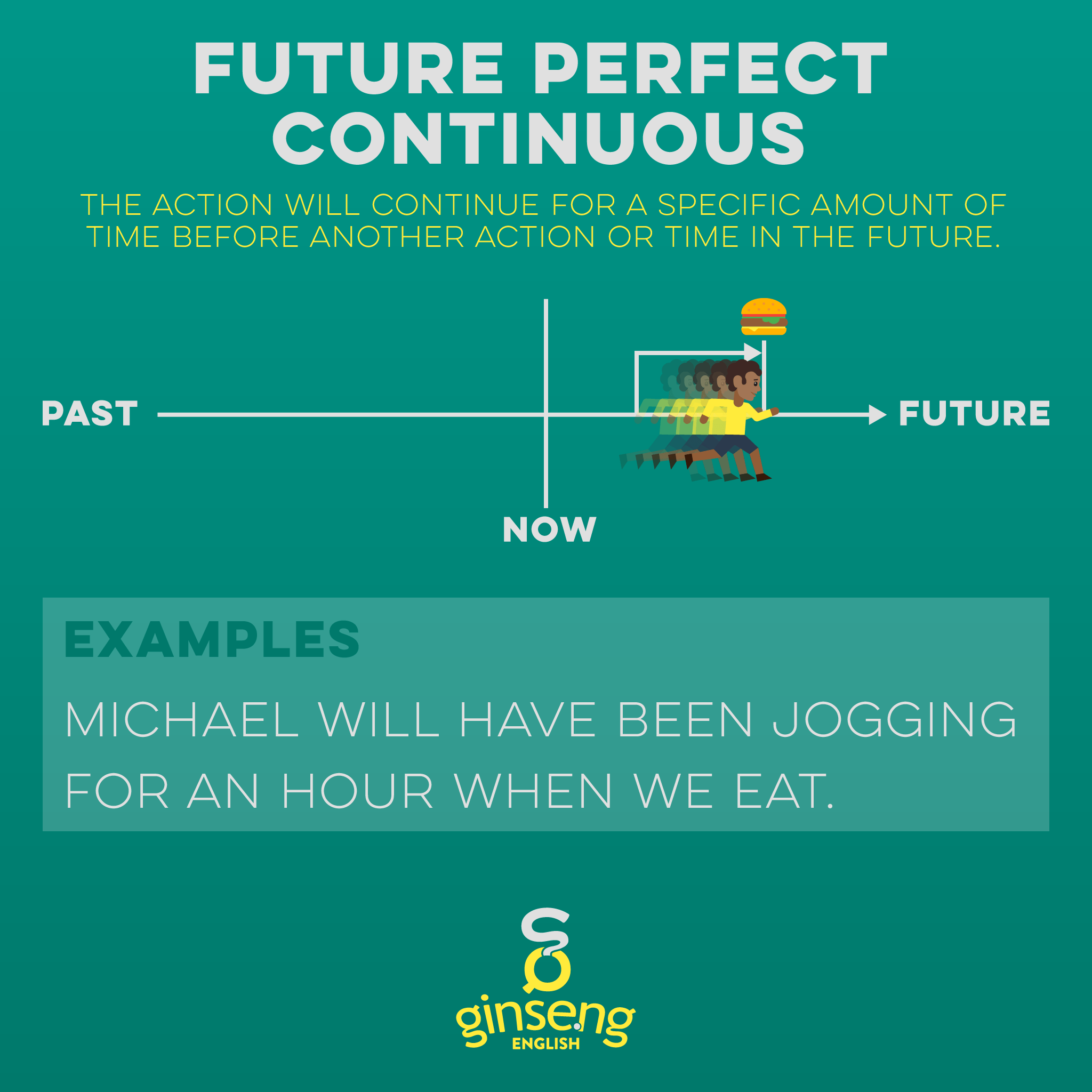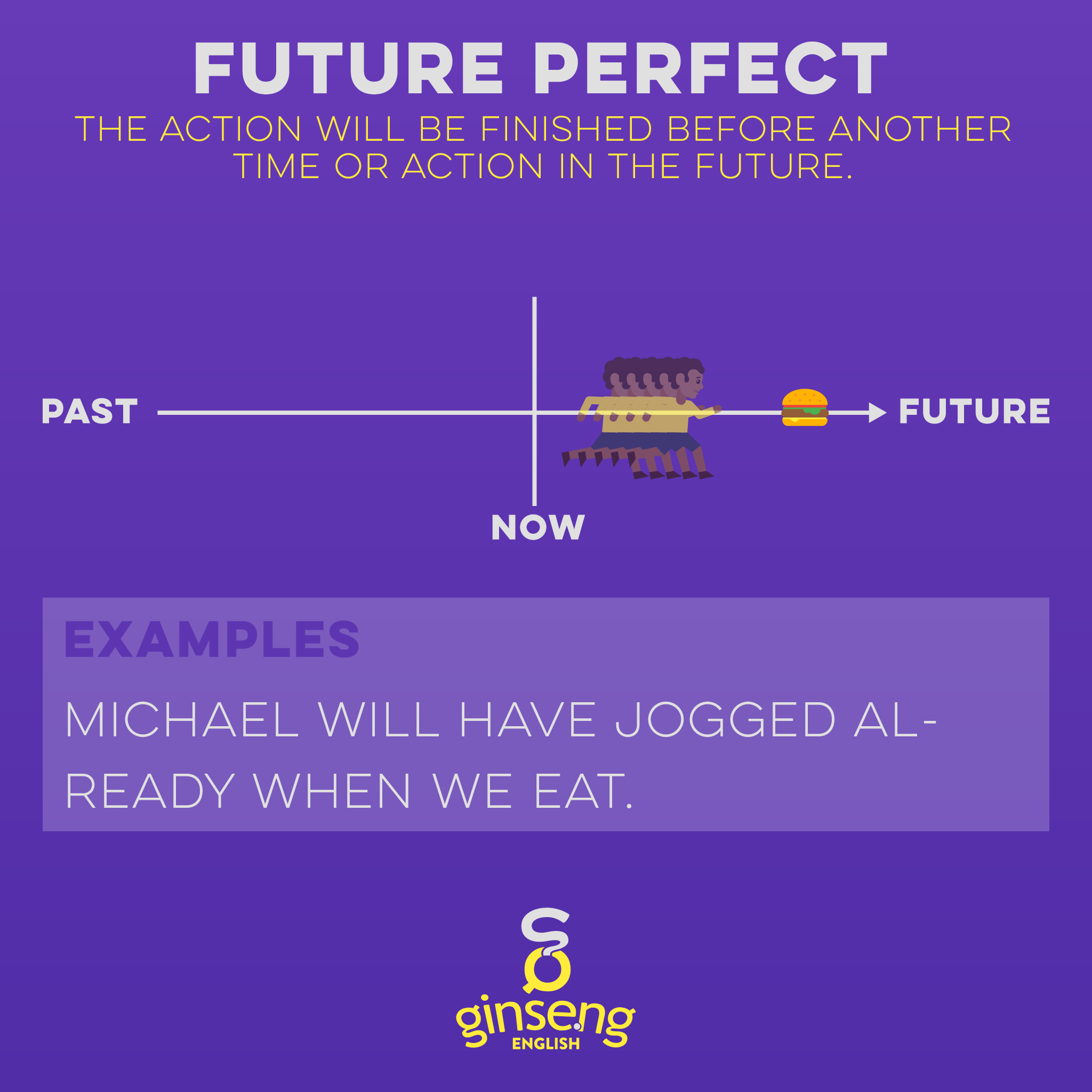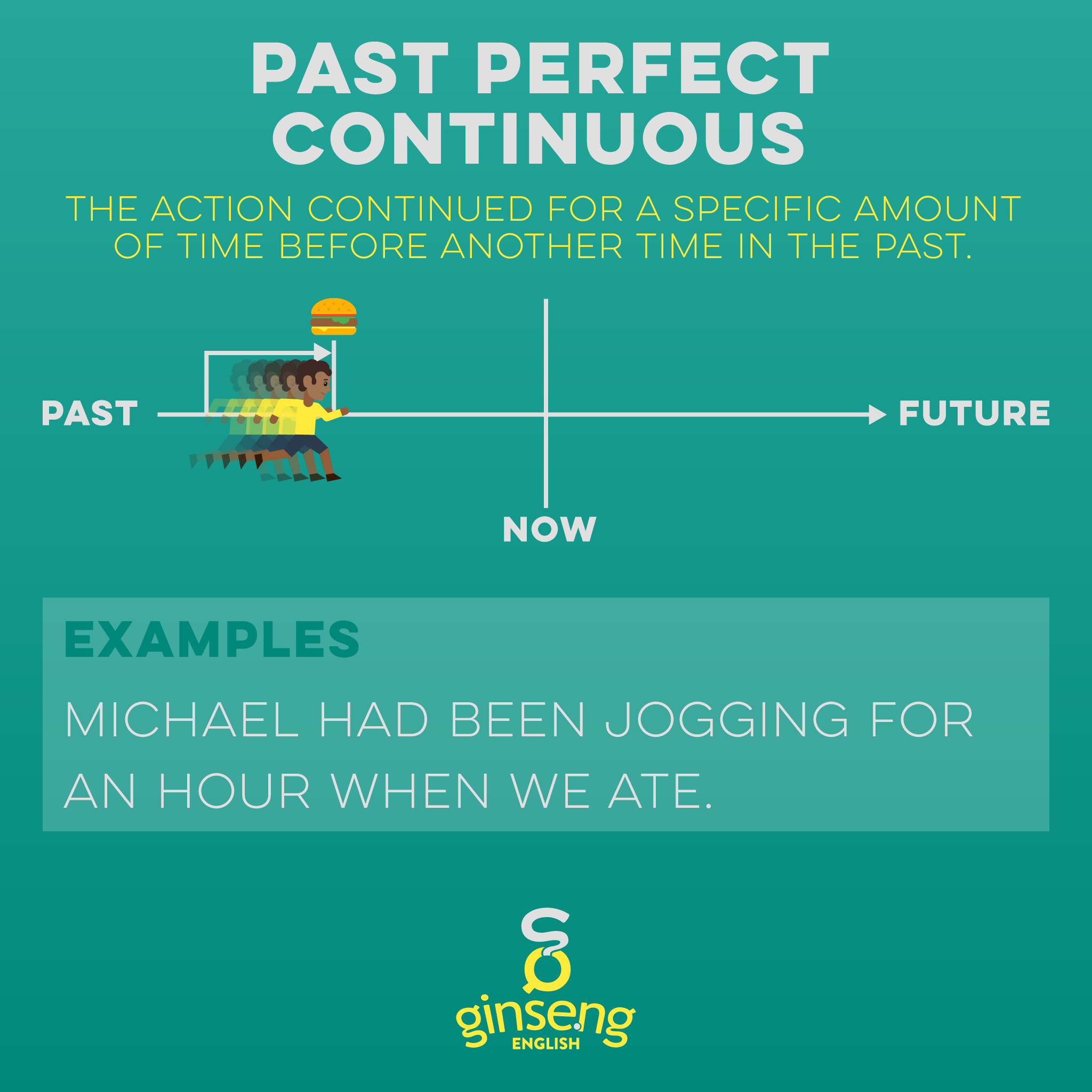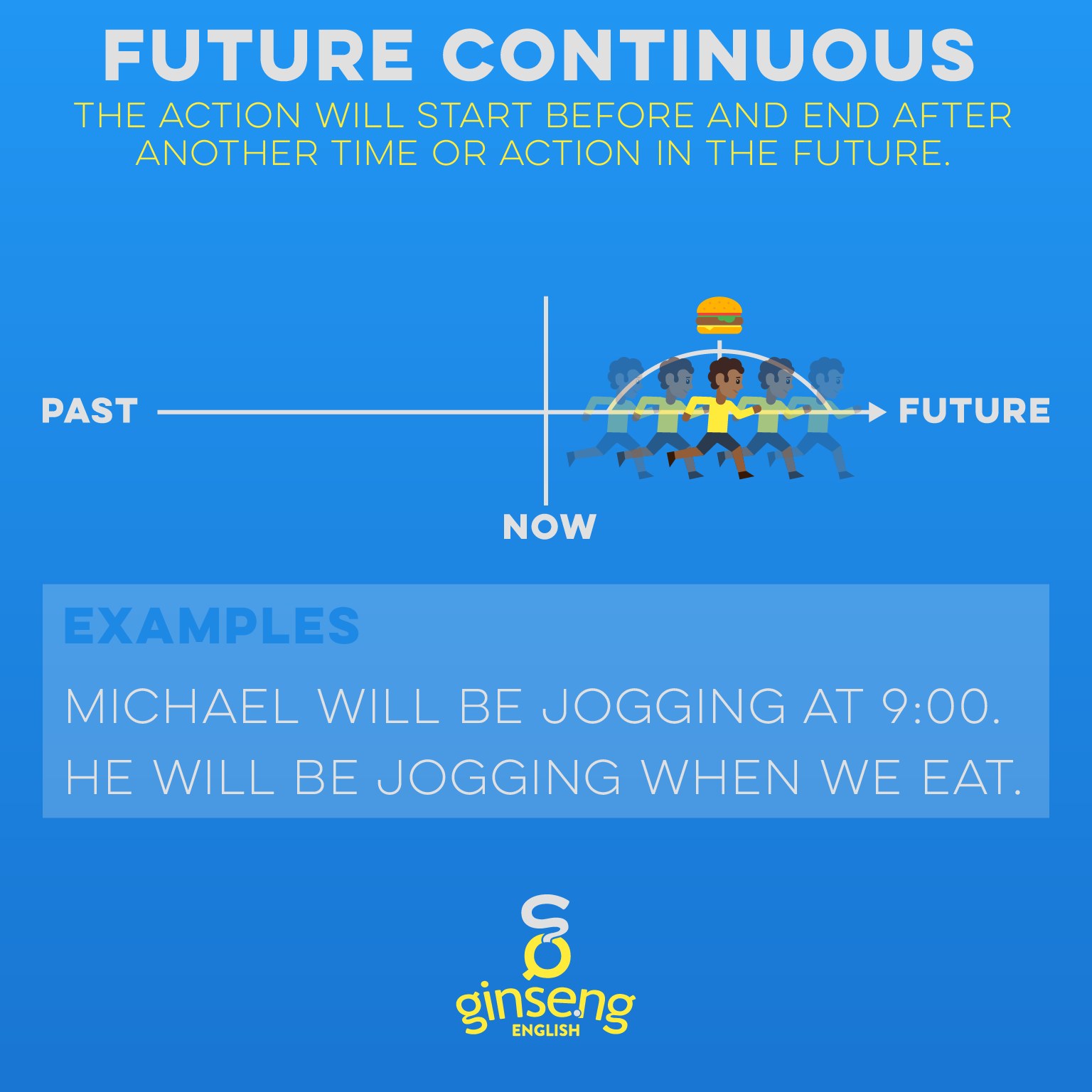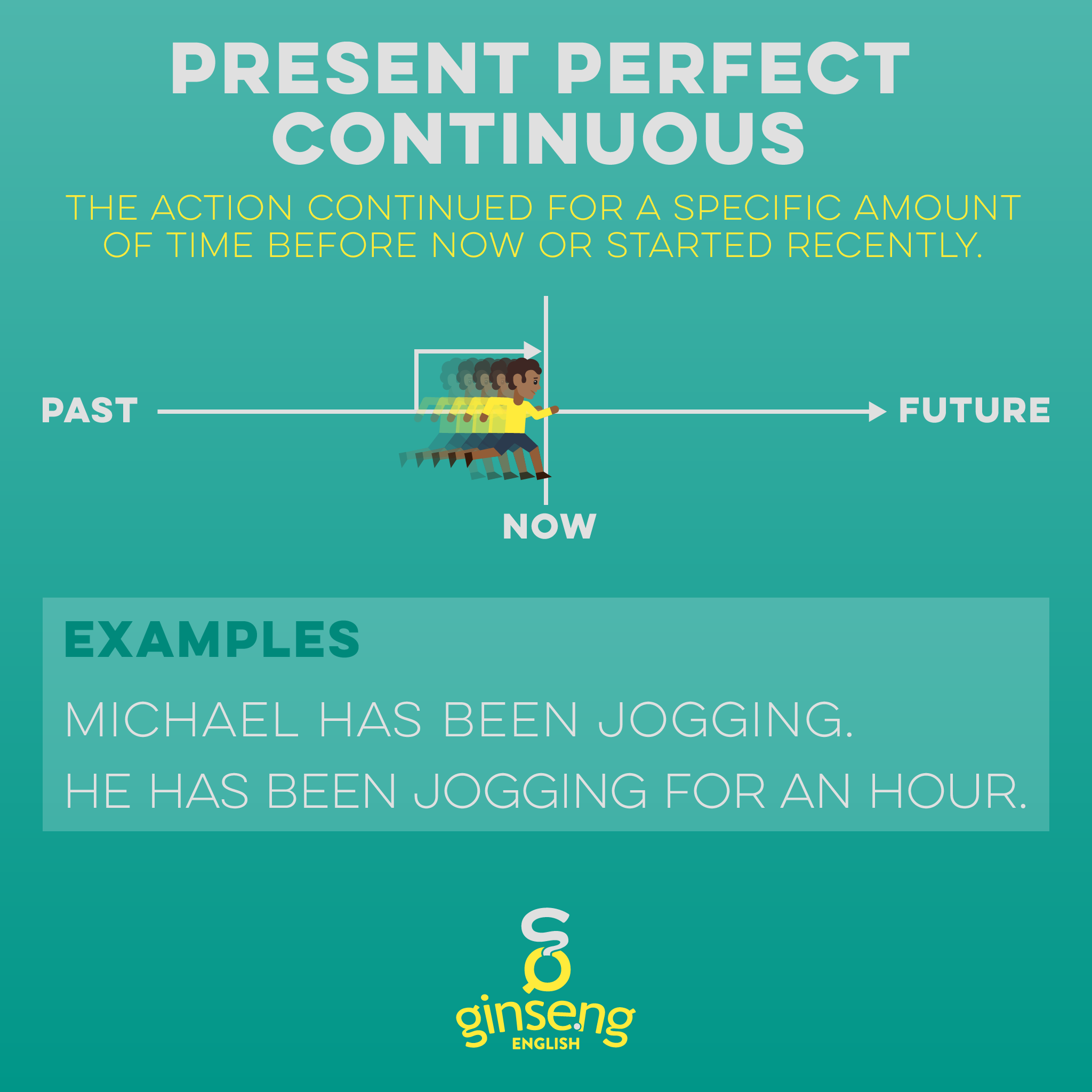The present continuous (also known as the present progressive) is a very common English verb form used to describe actions that are happening right now or during this period of time. About 5% of verbs in spoken English are in the present continuous tense.
Many English learners confuse it with the simple present tense. See this article about the difference between simple present and present continuous.
Read on to learn the rules and reasons for using and forming the present continuous, including lots of charts and examples!
Just to be clear, present continuous and present progressive are just different names for this same form. In some countries, one term is more common than the other, but continuous is more common overall.
USING THE PRESENT CONTINUOUS TENSE IN ENGLISH
The present continuous is used to show that an action is happening in the current moment or period of time. The action started before now, is happening right now, and will finish after now. See the illustration below.
Chart for Present Continuous Tense In English
It is important to recognize that this is very different from many other languages, in which the simple present is used to talk about actions happening right now. In English, the simple present is not used for actions that are happening now, but for actions that happen repeatedly. So we say:
I am reading right now.
We cannot say I read right now. And we say:
I read every night.
But we do not usually say I am reading every night.
More EXAMPLES OF THE PRESENT CONTINUOUS TENSE
Here’s a bunch of examples of the present continuous to help you get a better idea of how we use it.
I am studying English right now.
Are you talking to me?
He is working, but he can come visit after 5:00.
Wow. Look at all those people across the street! I think they are protesting.
We can also use the present continuous to describe actions that are generally in progress at a particular time:
Every Friday night at 7 she's sitting there watching her favorite TV show.
6:15 is no good. We are usually eating then.
We also use it to show that a situation is not permanent:
We're living in Brooklyn with a friend for a few months.
I lost my job at the bank so I'm working at Stop and Shop.
And also for situations that are newly changing or developing:
Cell phones are affecting every aspect of our lives.
Endangered species are going extinct at an alarming rate.
Present Continuous for Future Plans
There is one more use of the present continuous that is a little different. We said that generally we use this tense to talk about the current moment, but we also use the present continuous to talk about future plans:
We are going to San Francisco next week.
What are you guys doing this weekend?
Forming the Present Continuous
Formula
To form the present continuous, we use the present form of the helping verb be and then the continuous (-ing) form of the main verb.
subject + am/is/are + VERBing
Conjugation
This table shows the complete conjugation of the verb work in the present continuous.
| Singular | Plural | |||
|---|---|---|---|---|
| 1st person | I | am working. | we | are working. |
| 2nd person | you | are working. | you | are working. |
| 3rd person | he | is working. | they | are working. |
| she | is working. | |||
| it | is working. | |||
When adding -ing to C-V-C words, you should double the last consonant. When adding -ing to silent E words, drop the silent E.
Other Forms of the Present Continuous
Questions
To make questions in the present continuous, we already have the helping verb be, so all we have to do is move it to before the subject.
Are you wearing a tie?
Is she having a party?
Why is he crying?
What are they eating?
Negative Sentences
When forming a negative in the present continuous, not goes between the helping verb be (am, is or are) and the main verb.
I am not wearing a tie.
She’s not having a party.
The Passive Voice
To make a passive sentence in the present continuous, use be in the present continuous (am being, is being, or are being) and then the perfect form of the main verb.
A party is being planned.
The trash is being collected.
We are being attacked.
You are being lied to.
Signal Words
If you use the present continuous, it is generally clear that the time is right now, so it is not necessary to use any signal words. But for emphasis, we can say right now, currently, at the moment, as we speak, for the time being.
We can use the present continuous with always to talk about things that happen again and again, especially to show that we are annoyed by the repeated action:
He's always interrupting me whenever we try to have a serious conversation.
She's always showing up 10 minutes late. It's so inconsiderate.
To specify the time when the current action will end, use until.
I am working until 9:00.
If you want to specify when the current action began, using since, do not use the present continuous:
I am working since 5:00.
The present perfect continuous is better for situations like this.
CHECK OUT THESE OTHER FREE GRAMMAR RESOURCES:
Related Content
Present Perfect Tense in English


